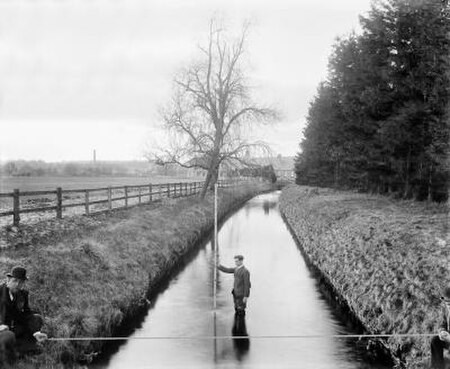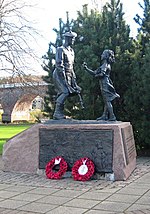Perth Lade
Landforms of Perth, ScotlandRivers of Perth and KinrossTay catchmentUse British English from February 2021

Perth Lade (also known as King's Lade) is an historic 4.5 mi (7.2 km)-long watercourse (colloquially known as a mill race) in Perth and Kinross, Scotland. Created in the 11th century or earlier, it has been used to power several watermills, such as those that functioned at Perth's Lower City Mills, which have existed since the 18th century. Over its course, at least nineteen industrial sites existed; today, the remains of nine of these can be seen, the rest lost to inner-city development and housing schemes of the 20th and 21st centuries. A footpath follows the majority of the lade's course.
Excerpt from the Wikipedia article Perth Lade (License: CC BY-SA 3.0, Authors, Images).Perth Lade
Tay Street, Perth Bridgend
Geographical coordinates (GPS) Address Nearby Places Show on map
Geographical coordinates (GPS)
| Latitude | Longitude |
|---|---|
| N 56.398323 ° | E -3.426616 ° |
Address
Tay Street
Tay Street
PH1 5JS Perth, Bridgend
Scotland, United Kingdom
Open on Google Maps










